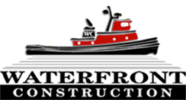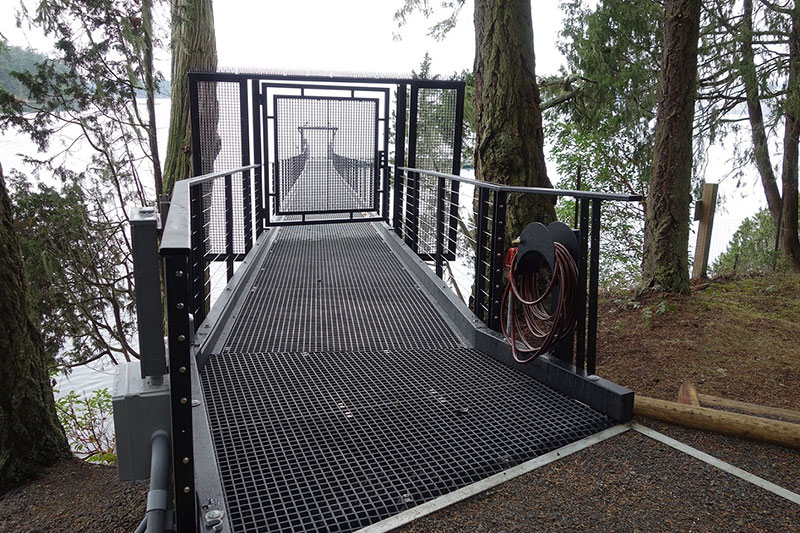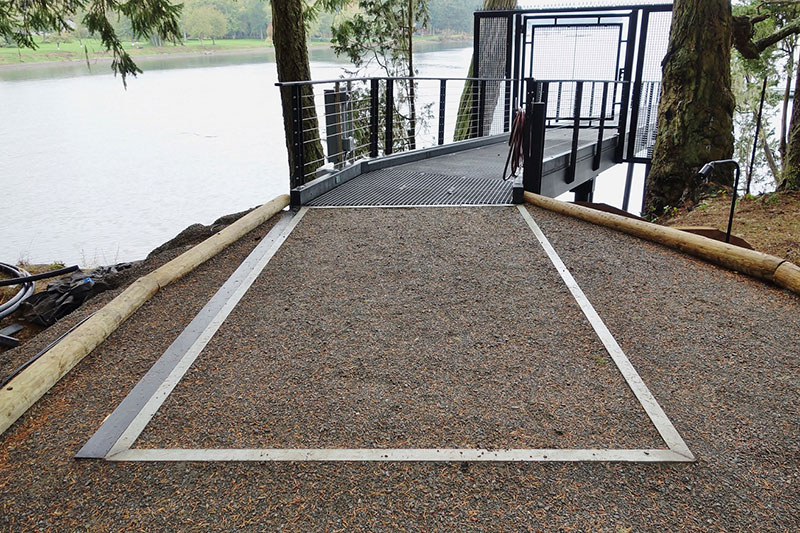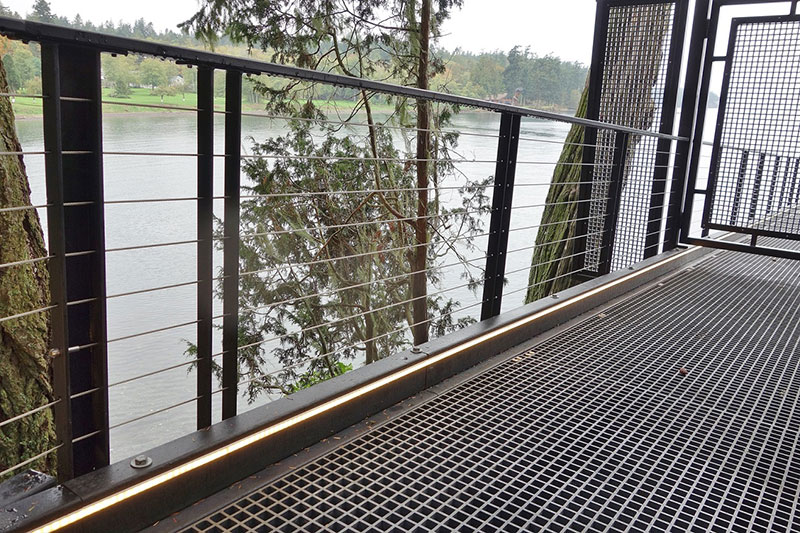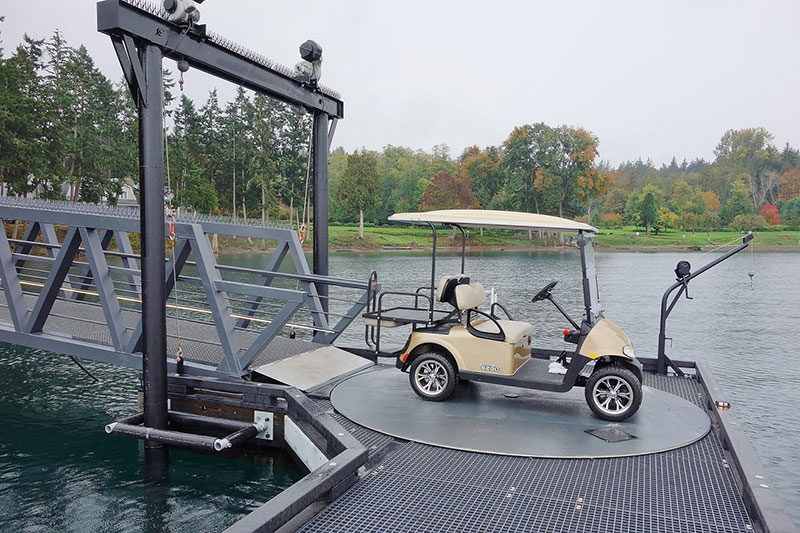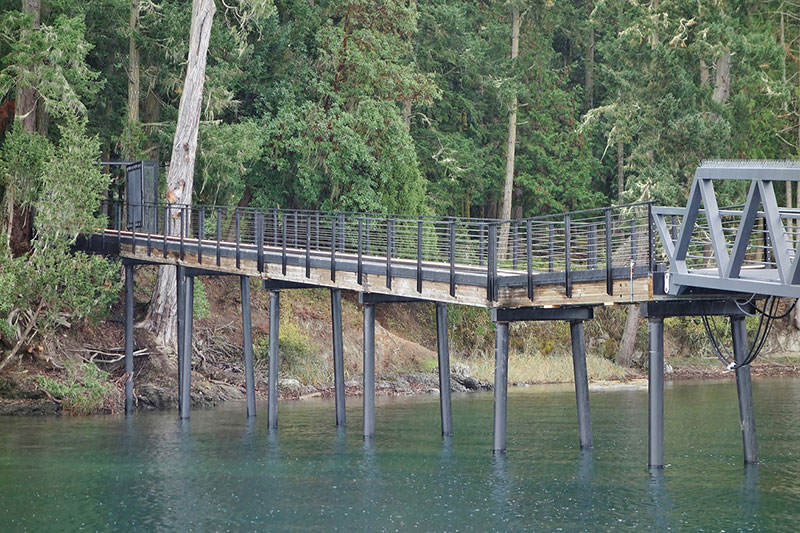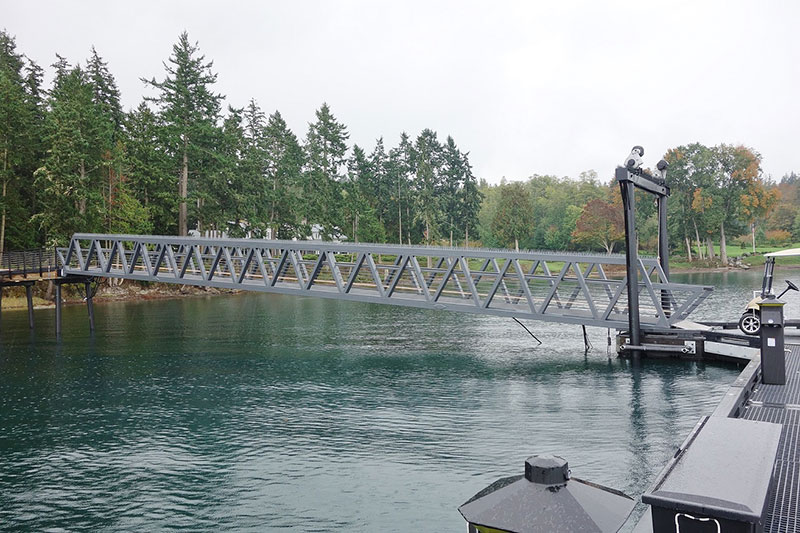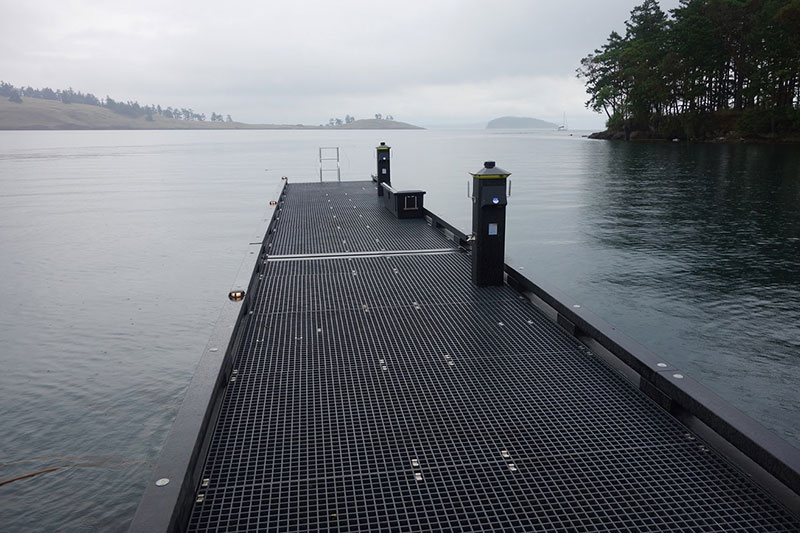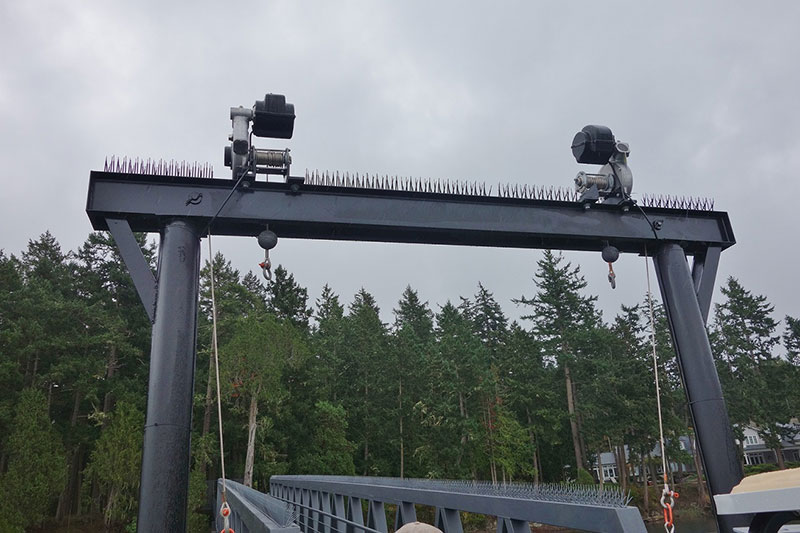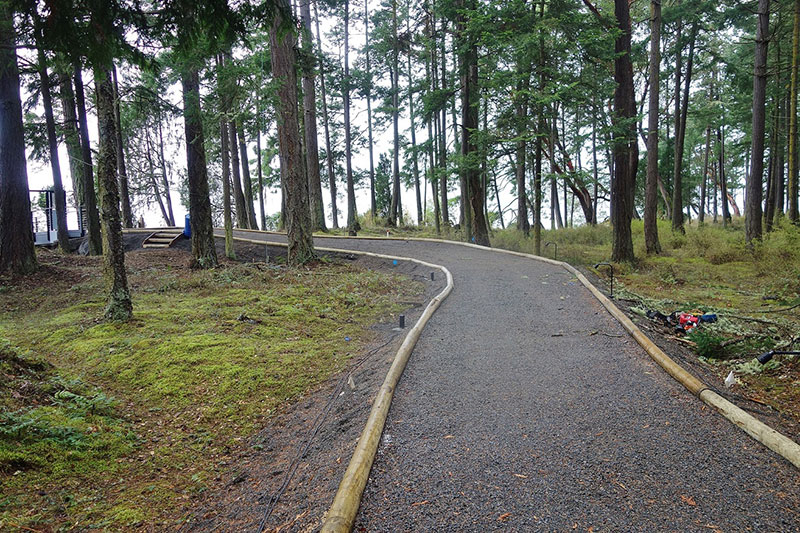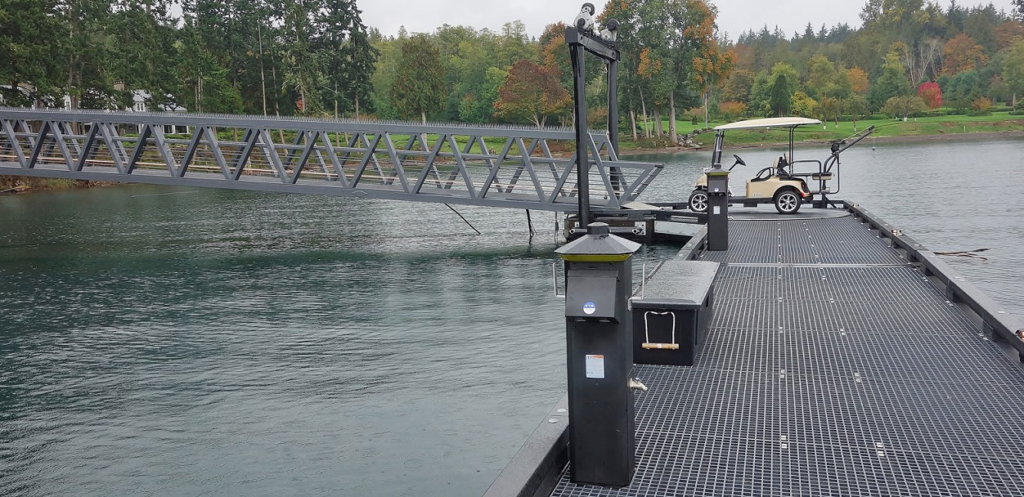
Spirit Cove Dock Design & Construction
Habitat, environment and cultural considerations all came into play
The scope of work includes building a dock system that allows convenient access by water to the estate taking into consideration tidal fluctuation.
The challenges on this project were intense. There tides fluctuated 12 feet. The piles for the main fixed walkway are going into rock and had to be drilled. The trees on the bank could not be removed. The footing for the fixed pier could not interfere with the Native American burial grounds. Anchoring was required for the float. The anchoring system needed to be embedded under the sea bottom and the anchoring lines had to never touch the sea bottom. The over burden on the sea bottom was thin; there was rock below. The float had to be strong enough to withstand the rough weather while letting enough light to penetrate through it. The Wight and size of the ramp/gangway were also an issue.
The Tides presented a tough challenge. Half of the installation is not a huge deal but the most shoreward half of the dock system seemed like a fire drill. We had to move into the shallow water as the tide was coming up. Then make sure we were able to get out before the barge got grounded and wound up stuck on a rock. The Massive rock drill takes 30 min to hook up to the crane. Taking the rock drill off would take about the same amount of time. Pulling and dropping spuds to anchor the barge has to be done with the crane as well and take up even more time. We would have a 3hr work window on average to get in and work, almost half of this time was rigging up equipment, making the time to drill extremely precious. Unfortunately, one of the times we were unable to get the barge out in time. This left a 2ft long tear in the bottom of the barge, in turn causing another very time sensitive issue to attend to.
The Native American burial grounds were fascinating to deal with. There were several areas in which tomb stones were encased by fencing of some kind. We of course could not disturb the tomb stones that were unfortunately located in the perfect spot to start the fixed pier portion of the Dock. Moving our work next to the tomb stones required the blessings of the local tribes.
One of the demands that had been asked of us was to provide a method of passage over the dock so the deer’s usual path was not altered; the usual path for the deer was right through the burial grounds along the shore line. You can see the accommodations in one of the illustrations shown.
The 100+ year old indigenous Mountain Mahogany was yet another obstacle we had to work around. This tree is over hanging the bank blocking access from using our crane. We needed to drive the most shoreward piles somehow up to an engineered standard to strength. What we came up with was driving multiple clusters of pin piles into the ground using jack hammers and scaffolding. These clusters of pin piles met at an apex at which they were all cut and had a plate welded to the top to act as a foundation cap. Essentially, we used multiple small piles to achieve the strength requirement and specked out for one bigger pile 6 in pile.
After having driven all of the piles we had to move on to the float portion of the project. To minimize the amount of piles we drive this float needed to be anchored. The issues that we had to work around when anchoring the float from a permitting stand point was to anchor the float without the use of clump weights. This meant we could not drop a big weight in the water to use as an anchor point. By default this forced us to use land anchors; specifically Manta Rays. The Manta rays get driven into he ground with a big jack hammer. These then go into the ground like a needle. When they get pulled back they open like a drywall anchor. This method works great when there is ground drive into. In this case there had only 2 ft of ground before bedrock. The solution to this was to use the big rock drill to drill in charge holes that were 8 ft deep. These holes were filled in with crushed rock by a diver, 5 gallons at a time. When the holes were filled, the Manta Ray was able to be driven down deep enough to hold.
Now that we have the float in place we need to connect the float with the fixed pier with a gangway. With this minimal pile project directed by the permitting restrictions and parameters, we had to connect the two with an 80ft gangway. This is about twice as long as the average ramp in the San Juan’s. When a gangways gets over 50 ft, structurally every beam has to get substantially bigger, making this ramp around 10,000 lbs. Half of the weight sits on the float which leads into one of the final obstacles of how to keep the float floating while maintaining 40% light penetration which is required to meet environmental standards. The problem with adding more floatation is the fact that the deeper the floatation is the more top heavy and out of balance the float becomes. The remedy was to install 3,250 pounds of counter weight that hang inside the 2 most seaward steel piles. Through a series of pulleys, the counter weights are able to take weight off the float regardless on what the tide may be like.
The final challenge to this project was how to turn the golf cart/ atv around so it doesn’t have to back up the ramp and fixed pier…. How about a big turn table?
